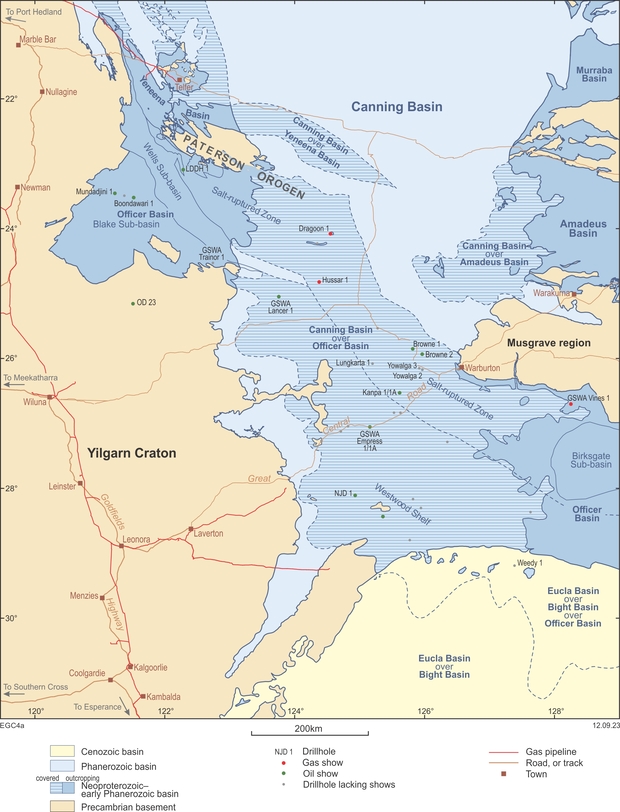The Neoproterozoic to Paleozoic Officer Basin extends 1500 km from the southeastern flank of the Pilbara Craton to the central-western part of South Australia and covers about 310 000 km2 within Western Australia.
Geological setting
The Officer Basin is a Neoproterozoic to Paleozoic intracratonic basin encompassing five major westerly and northwesterly trending depocentres with a sedimentary thickness of up to 8 km. The basin is predominantly Neoproterozoic, overlying older Proterozoic to Archean sedimentary, igneous and metamorphic rocks and overlain by Permo-Carboniferous and Cretaceous strata of the Canning Basin. The Officer Basin is divided into two phases to allow for its history as part of the Centralian Superbasin (Phase 1; 1000–510 Ma) and its continuation after the superbasin ceased as a recognisable entity (Phase 2; 515–359 Ma). The basin contains a mixed carbonate, silty and sandy siliciclastic, and evaporitic succession dominated by shallow marine to coastal deposition. The sedimentary succession preserves four supersequences common to central Australian Neoproterozoic basins, although Supersequence 2 is restricted in distribution in Western Australia. At the northwestern end of the Officer Basin, Supersequence 1 is inferred to transition to the contiguous Yeneena Basin, although correlations are uncertain due to structural complications and extensive cover.
The structural configuration of the basin is controlled largely by major salt deposits, which mobilised during several tectonic episodes. Five structural zones are recognised in Western Australia: the Salt-ruptured Zone, the Birksgate, Wells and Blake Sub-basins, and the southern Westwood Shelf. The Salt-ruptured Zone, with evidence of extensive salt movement from seismic data or outcropping structures, coincides with an elongate depocentre along the northeastern margin of the basin. Near the South Australian border this zone is contiguous with the western end of the Birksgate Sub-basin, a major depocentre that lies mostly within South Australia. Thinner and less deformed parts of the basin southwest of the Salt-ruptured Zone include the mainly flat-lying Westwood Shelf in the east and the more deformed Wells and Blake Sub-basins in the northwest. The basin has a complex history with several tectonic episodes — the most significant are the late Tonian Miles Orogeny, which terminated deposition in the adjoining Yeneena Basin, and the contiguous Ediacaran–Cambrian Paterson and Petermann Orogenies, when major uplift of basement in the Paterson Orogen and Musgrave region, respectively, shed large volumes of coarse siliciclastic sediments into the basin.
Exploration history
There have been several periods of stratigraphic and exploration drilling in the Officer Basin since 1965. The most significant was in the 1980s when three of the four new field wildcat wells in the basin were drilled and when nearly 80% of the 8600 line-km of 2D seismic data across the basin was acquired. The other 29 wells were stratigraphic tests mostly drilled by government agencies.
Prospectivity
Whereas Neoproterozoic sedimentary rocks source commercial accumulations of hydrocarbons in coeval strata in the eastern Amadeus Basin within the Northern Territory — notably the Dingo gasfield discovered in 1981 — only minor hydrocarbon shows are recorded in the Officer Basin in Western Australia. However, that is likely a function of the large proportion of wells drilled being stratigraphic and the thinness of possible source intervals found to date. Traps in the eastern zone of salt deformation may be breached due to continued salt movement. To the west, ubiquitous low dips are not encouraging for structural plays.
Lancer 1 intersected reservoir facies with >20% porosity, and permeability locally up to 10 darcies, as well as halite and shale beds thicker than 10 m that may be effective seals. The discovery of bitumen in the Tonian succession in several stratigraphic wells and mineral drillholes points to generation and migration of at least some liquid hydrocarbons, possibly involving lateral migration beneath the salt seal from deep sources in the basin depocentre. Geochemical modelling indicates most potential source rocks entered the oil-maturation window after the formation of structural traps in the Ediacaran–Cambrian and have remained at that level.
Play types in the Officer Basin vary geographically and stratigraphically. Subsalt mini-basin plays may be present, particularly in the Salt-ruptured Zone. Such plays are higher risk for reservoir and source, although halite beds should have sealing capacity. Suprasalt plays include folded four-way dip closures generated by low-amplitude, broad, open folds, and isoclinal to overturned thrust folds. Many of the larger folds are over salt diapirs, but opportunities for flanking traps or lateral truncation traps remain unexplored. Stratigraphic traps in the subsalt and suprasalt sections remain untested.
Officer Basin hydrocarbon shows
| Year | Discovery | Hydrocarbon type | Reservoir | Age of reservoir |
| 1965 | Browne 1 | Gas cut mud, cut fluorescence, trace oil in core | Browne Formation | Neoproterozoic |
| 1965 | Browne 2 | Gas cut mud, cut fluorescence, trace oil in core | Paterson Formation | Permian |
| 1980 | Kennecott Neal Junction N1-1* |
Bitumen in core |
Browne Formation |
Neoproterozoic |
| 1981 | WMC NJD 1* |
Bleeding oil in core Bitumen in core |
Browne Formation unnamed |
Neoproterozoic ?Mesoproterozoic |
| 1982 | Dragoon 1 | Mud gas to 1% methane equivalent, including hydrocarbons up to C5H12 | Browne Formation | Neoproterozoic |
| 1982 | Hussar 1 |
Mud gas readings to 1000 ppm. Possible gas blow on air lift. Trip gas up to 4.6%. 72% oil saturation from log analysis |
Kanpa Formation Hussar Formation |
Neoproterozoic Neoproterozoic |
| 1982 | Kanpa 1A | Dull yellow–orange and light yellow–white cut fluorescence, brown oil stains in sandstone and dolomite cuttings | Kanpa Formation | Neoproterozoic |
| 1993 | Normandy Lake Disappointment LDDH 1* | Bitumen in core | Tarcunyah Group | Neoproterozoic |
| 1996 | Jubilee GM Nabberu OD 23* | Bleeding oil and bitumen in core | Scorpion Group | Paleo – Mesoproterozoic |
| 1997 | Boondawari 1 | 40% oil fluorescence in core | Spearhole Formation | Neoproterozoic |
| 1997 | GSWA Empress 1A | Bitumen in core | Hussar Formation and Browne Formation | Neoproterozoic |
| 1997 | Mundadjini 1 | 10% oil fluorescence in core | Spearhole Formation | Neoproterozoic |
| 1999 | GSWA Vines 1 | Total gas peaks 25 times background | Pirrilyungka Formation | Neoproterozoic |
| 2003 | GSWA Lancer 1 | Bitumen in core | Hussar Formation | Neoproterozoic |
| * mineral exploration drillhole | ||||
GSWA publications
-
 GSWA Report 235
Western Officer Basin SEEBASE structural study and GIS
GSWA Report 235
Western Officer Basin SEEBASE structural study and GIS
-
 Western Officer Basin and Amadeus Basin SEEBASE
GIS data package 2022
Western Officer Basin and Amadeus Basin SEEBASE
GIS data package 2022
-
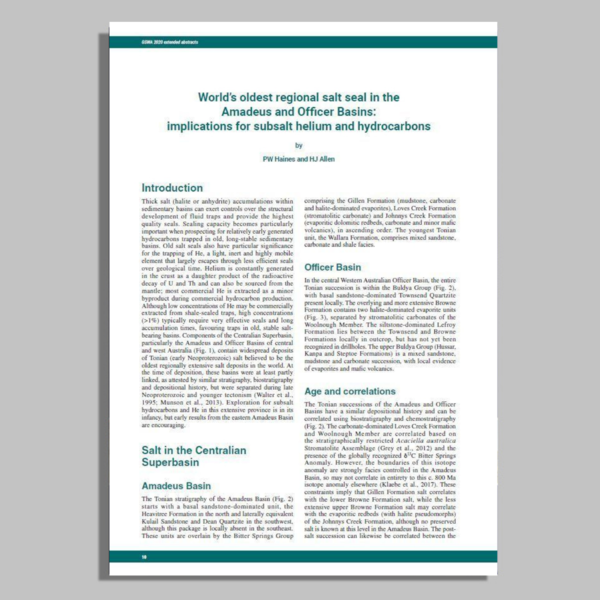 GSWA Record 2020/2 Open Day abstract
World’s oldest regional salt seal in the Amadeus and Officer Basins
GSWA Record 2020/2 Open Day abstract
World’s oldest regional salt seal in the Amadeus and Officer Basins
-
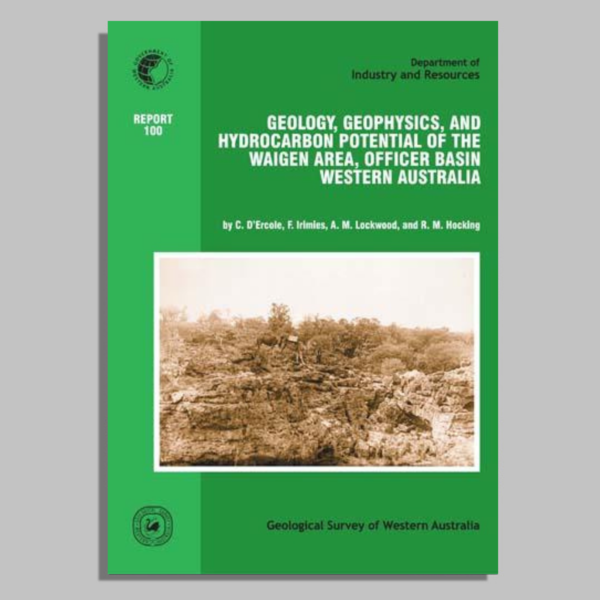 GSWA Report 100
Geology, geophysics, and hydrocarbon potential of the Waigen area, Officer Basin
GSWA Report 100
Geology, geophysics, and hydrocarbon potential of the Waigen area, Officer Basin
-
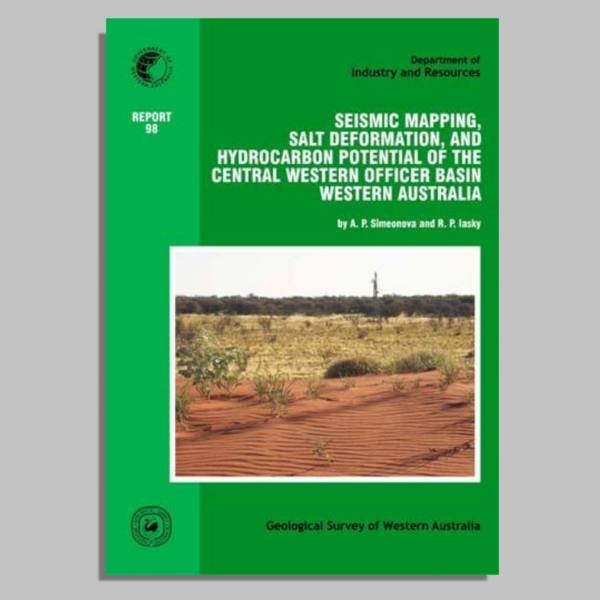 GSWA Report 98
Seismic mapping, salt deformation and hydrocarbon potential, Officer Basin
GSWA Report 98
Seismic mapping, salt deformation and hydrocarbon potential, Officer Basin
-
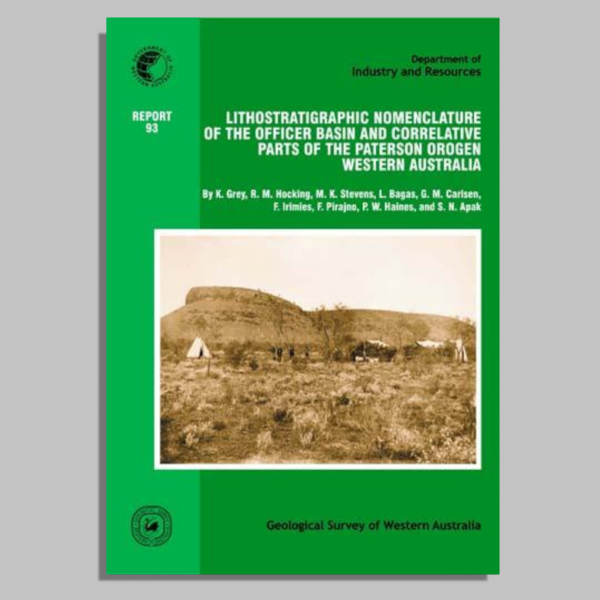 GSWA Report 93
Lithostratigraphic nomenclature of the Officer Basin
GSWA Report 93
Lithostratigraphic nomenclature of the Officer Basin
-
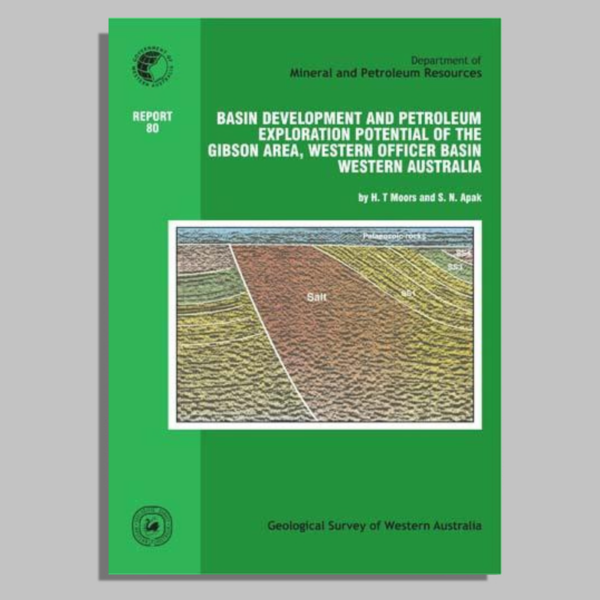 GSWA Report 80
Basin development and petroleum exploration potential, Gibson area, Officer Basin
GSWA Report 80
Basin development and petroleum exploration potential, Gibson area, Officer Basin
Further reading
Jackson, MJ and van de Graaff, WJE 1981, Geology of the Officer Basin: Bureau of Mineral Resources, Australia, Bulletin 206, p. 102.
Contact
For further information, contact:
basinenergy.geoscience@dmirs.wa.gov.au

